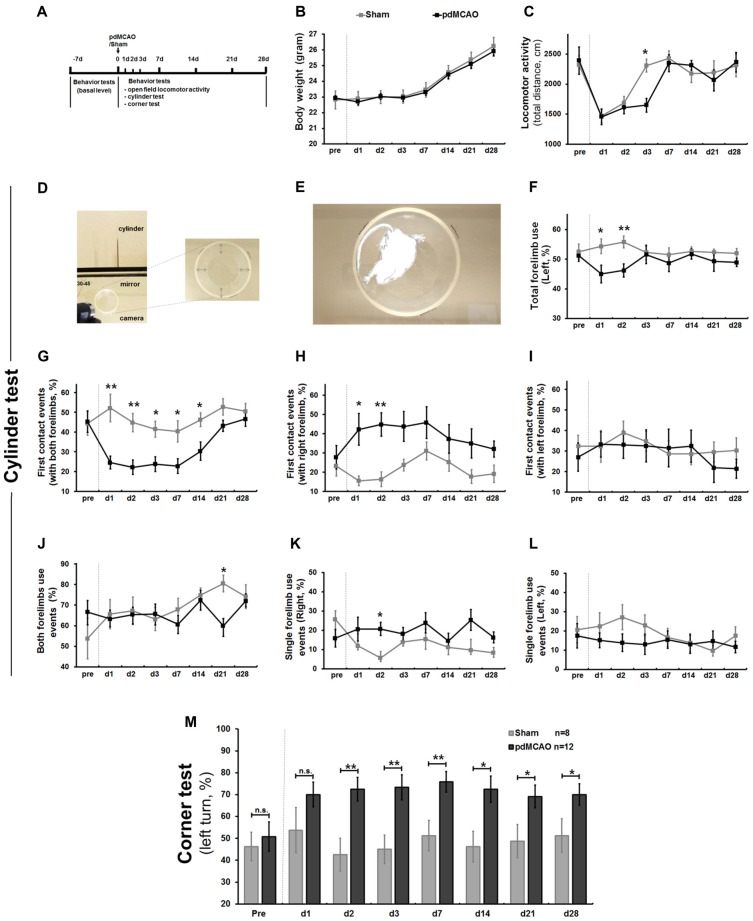Figure 1.
Establishment of long-term sensorimotor assessment in pdMCAO model mice over 4 weeks. (A) Scheme of the experimental design. (B) The pdMCAO mice did not exhibit significant weight change. (C) In the open field test, mice in both groups traveled similar distance at most time points except day 3 (P < 0.05) after surgery when compared with baseline measurements. (D) Schematic representation of the cylinder test paradigm. (E) Forelimbs explorations were assessed by traditional (F) and multiple new designed parameters (G–L). Compared to Sham, the pdMCAO mice exhibited remarkable decrease in percentage of total forelimb (affected, contralateral to the ischemic lesion side, F) use on day 1 (P < 0.05) and day 2 (P < 0.01), but not at later time points. Most prominently, the post-ischemic mice displayed significant decrease of the first contact events rate (with both forelimbs, G) on day 1, 2, 3, 7, 14 and tendency of gradual recovery by day 28 (P > 0.05). No significant difference was detected in the first contact events (with right/left forelimb) at the late stage (day 3–28) of ischemic stroke (H,I). No significant difference was revealed in both forelimbs use events (J) or single forelimb events (K,L) between ischemic stroke and control groups at most time points. (M) In corner test, post-ischemic mice displayed significant increase of left turn percentage (contralateral side) at most time points over 4 weeks compared to sham controls, except for day 1. *P < 0.05, **P < 0.01 in forelimb use compared to controls. Sham group, n = 8; pdMCAO group, n = 12. pdMCAO, permanent distal middle cerebral artery occlusion; Sham, sham-surgery; d, day.

